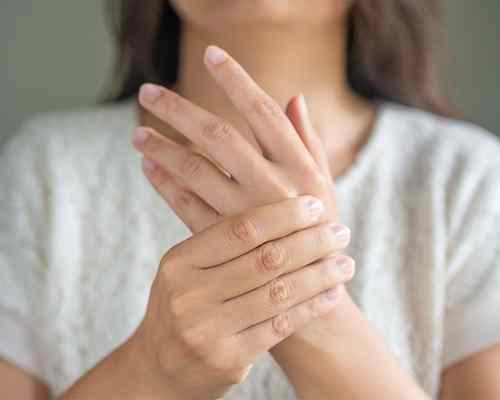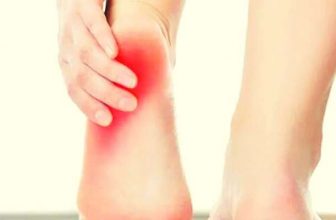
What Is Ape Hand? Causes & Treatment
Deformity of the Ape-Hand is caused by lesions of the median nerve, compression, and neuritis.
The apparent signs of the hands of an ape are:
- Atrophy of Thenar (making the thumb in the same plane as the hand, hence the name Ape-Hand).
- Failure to resist the thumb, such as a certain hyperextension of the index finger and thumb.
- Checked by hand clasping as in prayer or attempting to make a fist with “prayer” His side.
Introduction
The physical deformity in people that causes the thumb to be unable to abduct or oppose, causing little to no abduction and resistance to the thumb, is called an ape hand. Thumb abduction is the power to move the perpendicular away from the palm plane.
Additionally, the opposition is the tendency of the first metacarpal to swing over the hand’s palmar surface to come into contact with the thumb and tip of the little finger. Restricted flexion and extension can also occur with the thumb.
It is caused by injury to the Median Nerve, which causes the thenar eminence muscles to be wasted. So, with an extended thumb, the palm looks flattened.
What Are the Most Common Causes of Blackheads?
Why is the Ape-Hand Named that?
This name is probably taken because of its similarity to the hand of an ape. However, because apes have opposable paws, the word Ape Hand Deformity is a misnomer.
For men, an opposable thumb is indispensable. The thumb’s opposition refers to the thumb’s rotation along its long axis so that each fingertip of the same hand can be touched.
Causes of Ape-Hand
The Ape’s hand is typically the product of median nerve paralysis, usually caused by a profound wrist or forearm injury. This can impair the operation of the muscles of the dam.
The Median Nerve
The hand’s peripheral nerve originates from the brachial plexus around the axilla is the median nerve. It starts near the shoulder and runs down the arm’s length, providing the forearm and muscles of the hand flexors, including the thenar muscles and two lumbric laterals.
It also provides the lateral palm and three and three and a half fingers with sensory innervation.
The most common peripheral neuropathy in the world is Median nerve mononeuropathy, according to research. Because of various reasons, it can happen. The two most prevalent etiologies of median nerve damage include:
For example,
- Catastrophic fractures or penetrating wounds
- Chronic compression, e.g., syndrome of the carpal tunnel or tumor (Schwannoma)
While the median nerve provides the forearm with only motor control, the wrist and hand have both motor and sensory functions, including:
- Thumb
- Finger Index
- Fingers in the center
- Half of the finger of the ring
Therefore, it does not affect the little finger.
Costochondral Separation
Muscles of Thenar
The thumb muscles allow for strength gripping and precise pinching of the thumb. The four muscles are as follows:
- Abductor Pollicis
- Pollicis adductor
- Policies critics
- Brevis flexor pollicis
Treatment of Ape-Hand:
Management depends primarily on the etiology of the damage to the median nerve. It is possible to use splints in the case of Carpal tunnel syndrome.
Four other conservative treatments are:
- Physiotherapy Facilities (gentle exercises and massage help in the rapid recovery of nerve injury)
- Yoga
- Avoidance of repeated gestures of the hand and wrist
- Prognosis:
Typically, the prognosis is acceptable. It depends on the seriousness of the nerve damage, and the better the prognosis, the younger the patient. Additionally, in the gradual improvement of symptoms, conservative procedures assist. Within two to six weeks, the symptoms will improve. Moreover, the whole time of recovery ranges between four months and two and a half years.
Ape-Hand Deformity-like Hand Deformities:
There are a few other deformities of the hand that are synonymous with Ape hand deformity. They include:
Syndrome of the Carpal Tunnel
Carpal tunnel syndrome results from compression of the median nerve as it passes in the wrist through the carpal tunnel.
It is a relatively common condition characterize by the thumb, index finger, middle finger, ring finger discomfort, tingling, or numbness. These sensations will move up the forearm often.
Deficits in Sensory:
The thumb, index finger, middle finger, ring finger, tingling, numbness, and discomfort, occasionally even in the forearm.
The Trigger Finger
Also known as stenosing tenosynovitis, trigger finger or trigger thumb occurs when a finger or thumb is in a bent position.
The trigger finger at the base of the thumb or finger is also marked by soreness. When you turn your thumb or finger, you can also feel a pop or snap. In the morning, the stiffness seems to worsen as the thumb and fingers are used.
The Claw Hand:
Claw hand, often confused with ape hand deformity, is characterized by curled or bent fingers. One or both hands can be affected by this.
Claw hands can be activated later in life due to some arm injury, diabetic neuropathy, or presence at birth.
This condition also makes it hard to grab or pick up some item with your hand, like Ape’s hand.
Ape-Hand Diagnostic
On physical inspection, a bottle sign can be identified, i.e., there is a distance between the skin of the hand and the object when a person grasps a long cylindrical object (e.g., a bottle) in his hand.
Due to nerve injury, bottle sign the weakening of the thenar muscles.
The following diagnostic processes need to use after history and physical examination.
- The velocity of Nerve Conduction
- Electromyography’s (EMG)
What Are The Best Exercises For Flexibility?
Frequently Asked Question (FAQs)
What kind of nerve damage would lead to ape-like hands?
The thumb is usually rotated and adduced and referred to as an “ape-like hand“. The deformity of the pointing finger cause flexor digitorum superficial is paralysis due to damage to the median nerve in the mid-forearm.
What causes hand paralysis?
When you touch the funny bone in your forearm, the ulnar nerve causes a shock-like feeling. When you injure your ulnar nerve, you will lose sensation and have muscle weakness in your side. This refers as palsy of the ulnar nerve or neuropathy of the ulnar.
Claw, is that bad for your hand?
You could be at risk of wrist and hand pain with the claw grip.
There are no researches that seem to concentrate on whether the claw grip is good or bad for your hands. There is, however, much anecdotal evidence that this may lead to accidents of pain and overuse.
Conclusion
Many disorders, including ape hand and carpal tunnel syndrome, may be caused by damage to or compression of the median nerve. Furthermore, must see the doctor if you have pain in your fingers, wrists, or forearms. Thus, your doctor will develop a treatment plan after a diagnosis to relieve symptoms and prevent potential harm.
3 Benefits For Women To Run Every Day







[…] What Is Ape Hand? Causes & Treatment […]
[…] that plays a role in their insecurity. The lack of confidence that often accompanies this situation causes further obstacles in their way to lead a happy and fruitful […]
[…] hustle and attain success, there must be some failures that can take place. Moreover, focus on the causes of failure first, through this you can improve your mistakes and learn from them. The major causes […]
[…] What Is Ape Hand? Causes & Treatment […]